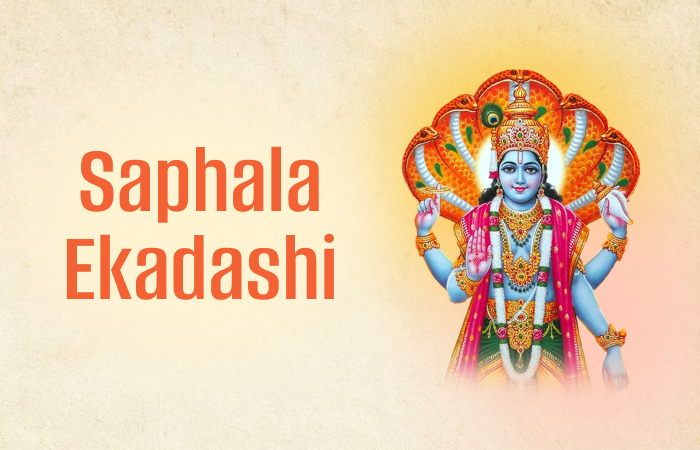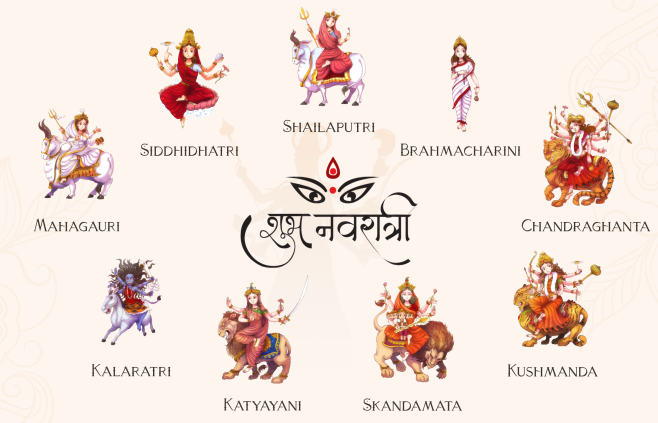Saphala Ekadashi: Significance, Rituals, Story and Puja Vidhi

Saphala Ekadashi, also known as Paush Krishna Ekadashi, is observed in the Hindu calendar during the month of Paush. Occurring in January is the first Ekadashi of the year. The term ‘Saphala’ translates to prosperity, appropriately describing this day as a time when devotees are blessed with good fortune, bringing an end to their troubles. If observed devoutly, it cleanses all sins and establishes a connection with the supreme creator. Let us learn about the significance of Vrat Katha and Puja Vidhi for Saphala Ekadashi.
Significance of Saphala Ekadashi: Get the Blessings of Narayana
The Saphala Ekadashi’s significance is detailed in the “Brahmanda Purana.” Accordingly, devotees who observe a fast on this day can transform misfortune into good fortune, ending life’s hardships. This fasting ritual possesses the power to turn desires and dreams into reality, recovering all that was lost, including wealth, affection, honour, and health.
Fasting on Saphala Ekadashi is considered a way to open doors to abundance, success, prosperity, and fortune. During this fast, devotees are advised to consume only Satvik food and contribute essentials to Brahmanas and those in need. It is believed that observing this fast can cleanse sins and lead to liberation.
Observing the Saphala Ekadashi vrat is extremely significant, equivalent to the virtue gained through meditation for thousands of years. This implies that choosing the Saphala Ekadashi vrat is a highly effective alternative to pleasing Lord Vishnu without the need for extensive meditation.
The importance of this vrat is further emphasised by the statement from Lord Krishna to Yudhishthira, expressing that nothing pleases him more than a devotee observing the Saphala Ekadashi vrat.
Saphala Ekadashi Vrat Katha
The Beginning
In the city of Champavati, King Mahishmati had four sons. The eldest, Lumpaka, was quite sinful, often disrespecting Brahmanas, Vaishnavas, and demigods. As a result, his father banished him. Lumpaka, now living in exile in a jungle, would sneak into the kingdom at night to steal, including food. Despite his theft, citizens would release him due to his royal lineage. Lumpaka survived by consuming raw meats and fruits throughout his life.
Story of Lumpaka
In the forest, there was a banyan tree highly worshipped like the demigods. Lumpaka resided under this tree for some time. It so happened that Lumpaka was living this way on the Ekadashi of the waning moon in November–December. Due to fatigue, he became unconscious a day before Ekadashi and regained consciousness at midday on Ekadashi day.
Lumpaka, being very weak, couldn’t possibly hunt any animals that day. He was greatly troubled by hunger. Eventually, he found some fruits but chose to offer them to Lord Vishnu, praying for mercy. He stayed awake throughout the Ekadashi night, unintentionally observing Saphala Ekadashi through fasting and vigil.
Narayan Blessed Lumpaka
Lord Vishnu accepted Lumpaka’s worship and Ekadashi vows, blessing him with the return of his kingdom. The next morning, a divine horse appeared beside Lumpaka. A voice from the sky conveyed, “Oh Prince, through the mercy of Lord Madhusudana and the influence of Saphala Ekadashi, you will effortlessly regain your kingdom. Return to your father and enjoy your rule.”
Following these instructions, Lumpaka returned to his father, took up the duties of ruling the kingdom, and subsequently gained a beautiful wife and had good sons.
Puja Vidhi For Saphala Ekadashi
The Puja Vidhi to be followed on Saphala Ekadashi is quite simple. It is as follows:
- On Saphala Ekadashi day, wake up early and go about your usual activities.
- Take a vow of fasting after wearing clean clothes and offering water to the Sun.
- Present yellow flowers and objects to Vishnu and worship the Lord with incense, lamps, fruits, coconut, betel nut, amla, pomegranate, and Panchamrit.
- Recite Aarti, Chalisa, Mantra, and a thousand names of God. Chant “Om Namo Bhagavate Vasudevaya” 108 times.
- Donate according to your ability, as it holds special significance on this day.
- Stay awake all night, singing bhajans, kirtans, or hymns in the name of Shri Hari.
- Break your fast on Dwadashi Day, offering food and donations to Brahmins and the needy before eating yourself.
In case you have any confusion, you can speak to expert astrologers and pundits at NamoAstro.
Saphala Ekadashi Do’s and Don’ts
Saphala Ekadashi Do’s:
- Wear clean clothes.
- Offer donations and food to Brahmins.
- Always light a ghee Diya on Saphala Ekadashi.
- Offer only yellow flowers.
- Before breaking the fast, offer special prayers to Lord Vishnu, Shri Hari, and Lord Narayan.
Saphala Ekadashi Don’ts:
- Avoid eating non-vegetarian foods or any food containing onions or garlic.
- Do not consume alcohol or any intoxicant on Saphala Ekadashi.
- Sleep on the floor, not on the bed.
- Avoid plucking flowers, branches, or leaves on this day.
- Consider it unlucky to harm animals or speak harshly of others on this day.
Frequently Asked Questions
Q: What are the things devotees can eat during Saphala Vrat?
A: The way people observe the fast for Saphala Ekadashi varies. Those who observe Nirjal Vrat refrain from eating anything, including water. However, other devotees have the option to eat fruits, sabudana, and tea.









